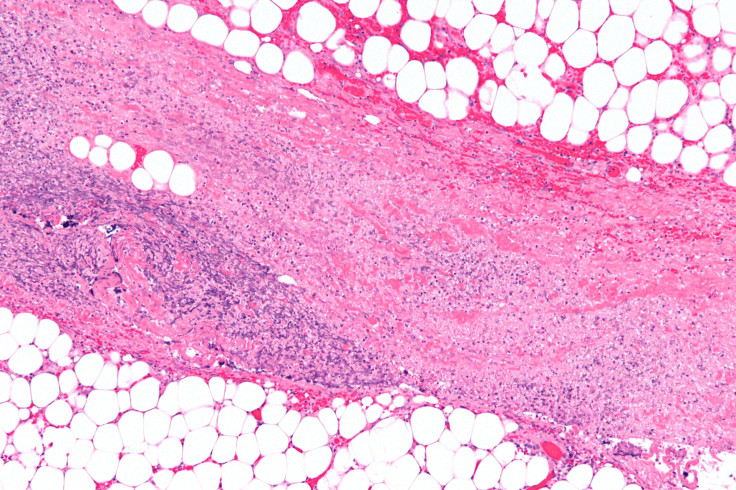Flesh-Eating Bacteria Could Claim Georgia Woman’s Hands And Feet, Source Of Necrotizing Fasciitis A ‘Mystery’

What began as an unassuming pain in her shoulder could lead to 34-year-old Cindy Martinez losing her hands and feet to a dangerous flesh-eating bacterium. Martinez, who lives in Gwinnett County, Georgia, was recently hospitalized with necrotizing fasciitis, a condition that causes a person’s flesh to waste away. Doctors have had to remove dead muscle and tissue from Martinez’s body as she struggles to fight off the infection, according to WSB-TV Channel 2.
Health officials say it’s unclear how Martinez contracted the dangerous bacterium, which typically enters the body through an open wound. “That seems to by the mystery at this point,” David Martinez, husband of Cindy Martinez, told WSB-TV Channel 2 of his wife’s infection. “She didn’t have any injury, and initially at home, when she was feeling the pain, I looked at where the pain was at and I didn’t notice anything, and that’s what’s troubling.”
Cindy Martinez was admitted to the hospital over two weeks ago. Doctors have said she could lose her hands and feet as the bacterium spreads through her body.
Necrotizing fasciitis is a serious skin infection in which flesh-eating bacteria attacks and kills the body’s soft tissue. It can be caused by one of several kinds of flesh-eating bacteria, including group A Streptococcus, Klebsiella and Clostridium, among others.
While extremely rare, the condition affects an estimated 650 to 850 people in the U.S. every year, according to the U.S. Centers for Disease Control and Prevention. It is typically treated by surgically removing the affected tissue and with antibiotics.
Many people associate flesh-eating bacteria with beaches, as a particular bacteria in warm saltwater can cause the condition. The bacterium associated with the ocean-acquired necrotizing fasciitis is Vibrio vulnificus, which occurs naturally in warm coastal environments and is most commonly found along the Gulf Coast states and Florida. While most people who come in contact with V. vulnificus do so from eating raw or undercooked seafood, especially shellfish, some patients acquire the bacteria from entering the ocean with an open wound or cut.
There are about 90 infections of V. vulnificus in the U.S. every year. About a third of patients who contract the bacterium die. Cases of V. vulnificus typically occur in the summer, when ocean temperatures are warmest.
© Copyright IBTimes 2025. All rights reserved.






















